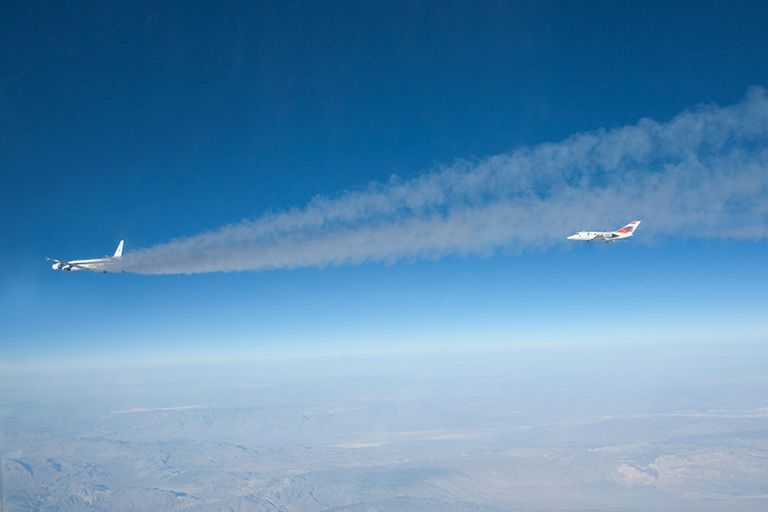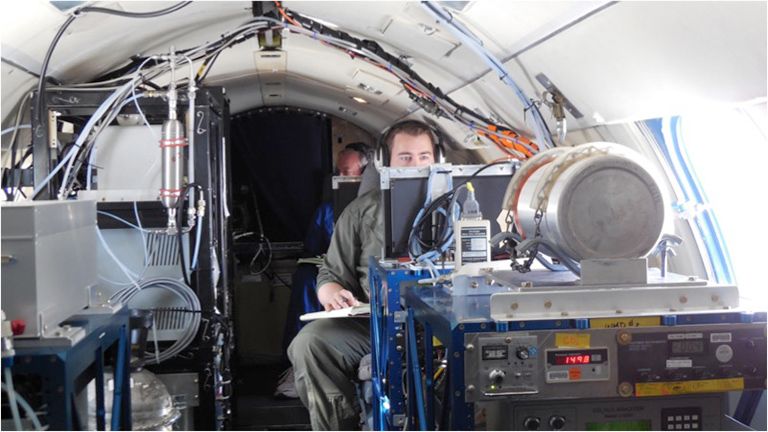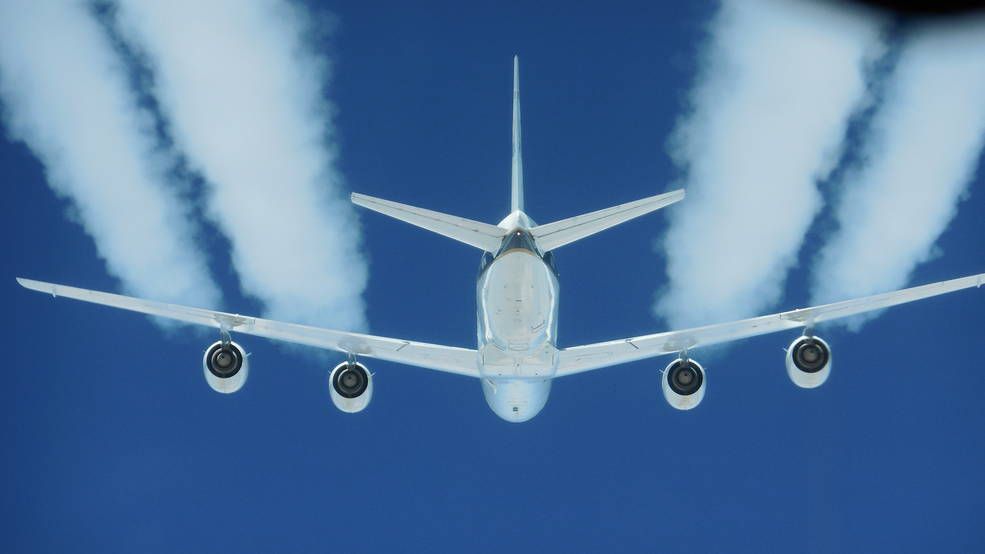A new study by NASA shows that switching jets to biofuel could be a game-changer in the fight against climate change. It's all about the clouds.
Planes help create clouds every day. Jet exhaust produces water vapor, carbon dioxide and carbon (also called soot). Water vapor can condense and freeze into ice crystals on soot particles.
The long streaks of clouds that form behind planes are known as contrails.

These clouds in the upper atmosphere can linger for hours. They produce localized changes in temperatures which, in turn, can affect climate.
The NASA study noted that the cirrus clouds that aircraft form globally in a single day have a greater warming impact than all the carbon dioxide (a greenhouse gas) aircraft have emitted since the Wright Brothers.

They performed the tests in 2018 at the Ramstein Air Force Base in Germany.
One plane's fuel tanks contained a mix of half regular fuel and half biofuel. This special fuel is made from renewable energy sources such as plants, algae or animal waste.
They outfitted a second plane with multiple sensors. This flying laboratory flew behind the plane with the biofuel mix and took measurements. Sometimes, the planes were as close as 100 feet from each other.
The results were overwhelmingly positive.

The study showed that the plane created fewer soot particles when they used the biofuel mix. That meant fewer ice crystals, which led to a reduction in clouds forming.
The study also showed that the particles that did form were larger than with conventional fuels. The larger soot particles are heavier and fall to Earth faster, reducing the ability of clouds and contrails to form.
The study was a big success and showed that biofuel mix could help in the battle against climate change.



